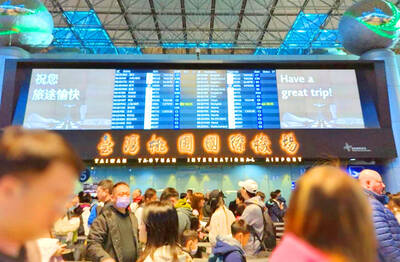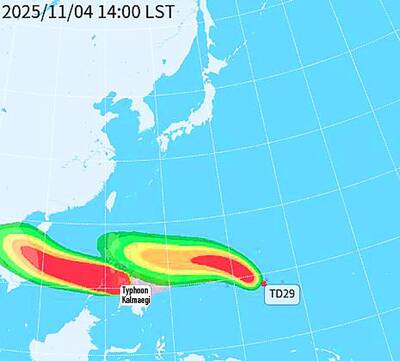The Democratic Progressive Party (DPP) caucus accused the government yesterday of ignoring national defense after it allegedly halted plans to upgrade the Taiwan-made Indigenous Defense Fighter (IDF) warplanes.
The Chinese-language Liberty Times (the Taipei Times’ sister newspaper) reported yesterday that the Cabinet decided to halt a plan to upgrade IDF fighters, or the Hsiang Chan Project, despite President Ma Ying-jeou’s (馬英九) approval of the project.
The report said the Cabinet’s decision was made to avoid undermining warming relations with Beijing.
DPP Legislator Kao Jyh-peng (高志鵬) told a press conference at the legislature yesterday that the DPP caucus condemned the move, adding that defense priorities had changed dramatically since Ma took office in May.
“The government not only is unable to procure F-16C/Ds from the US but has also canceled the upgrade of the IDF fighters,” Kao said.
“It is totally ignoring national defense,” he said.
He said that Ma’s dream of ultimate unification with China has had a sustained impact on military policies.
Kao said that under Ma’s administration, Taiwan would probably surrender to China if it were to launch a military attack.
The Hsiang Chan Project includes plans to enhance the IDF’s firepower, lengthening its range and providing it with the capability to attack Chinese radar control systems, runways, fuel depots and amphibious troops.
Taiwan began to develop the IDF in 1980 when the US was unwilling to provide it with F-16s. Taiwan built 130 IDFs with the help of defense firm General Dynamics, which manufactures the F-16.
In 1992, Taiwan succeeded in ordering 150 F-16A/Bs from the US and 60 Mirage 2000-5s from France.
As plans for the IDFs were more than 20 years old, the Aerospace Industry Development Corp (AIDC) launched the NT$7 billion (US$230 million) Hsiang Chan Project to upgrade the aircraft.
On March 29 last year, AIDC showed the first two upgraded IDFs to former president Chen Shui-bian (陳水扁).

Three Taiwanese airlines have prohibited passengers from packing Bluetooth earbuds and their charger cases in checked luggage. EVA Air and Uni Air said that Bluetooth earbuds and charger cases are categorized as portable electronic devices, which should be switched off if they are placed in checked luggage based on international aviation safety regulations. They must not be in standby or sleep mode. However, as charging would continue when earbuds are placed in the charger cases, which would contravene international aviation regulations, their cases must be carried as hand luggage, they said. Tigerair Taiwan said that earbud charger cases are equipped

Foreign travelers entering Taiwan on a short layover via Taiwan Taoyuan International Airport are receiving NT$600 gift vouchers from yesterday, the Tourism Administration said, adding that it hopes the incentive would boost tourism consumption at the airport. The program, which allows travelers holding non-Taiwan passports who enter the country during a layover of up to 24 hours to claim a voucher, aims to promote attractions at the airport, the agency said in a statement on Friday. To participate, travelers must sign up on the campaign Web site, the agency said. They can then present their passport and boarding pass for their connecting international

WEATHER Typhoon forming: CWA A tropical depression is expected to form into a typhoon as early as today, the Central Weather Administration (CWA) said yesterday, adding that the storm’s path remains uncertain. Before the weekend, it would move toward the Philippines, the agency said. Some time around Monday next week, it might reach a turning point, either veering north toward waters east of Taiwan or continuing westward across the Philippines, the CWA said. Meanwhile, the eye of Typhoon Kalmaegi was 1,310km south-southeast of Oluanpi (鵝鑾鼻), Taiwan’s southernmost point, as of 2am yesterday, it said. The storm is forecast to move through central

Taiwan sweltered through its hottest October on record, the Central Weather Administration (CWA) said yesterday, the latest in a string of global temperature records. The main island endured its highest average temperature since 1950, CWA forecaster Liu Pei-teng said. Temperatures the world over have soared in recent years as human-induced climate change contributes to ever more erratic weather patterns. Taiwan’s average temperature was 27.381°C as of Thursday, Liu said. Liu said the average could slip 0.1°C by the end of yesterday, but it would still be higher than the previous record of 27.009°C in 2016. "The temperature only started lowering around Oct. 18 or 19